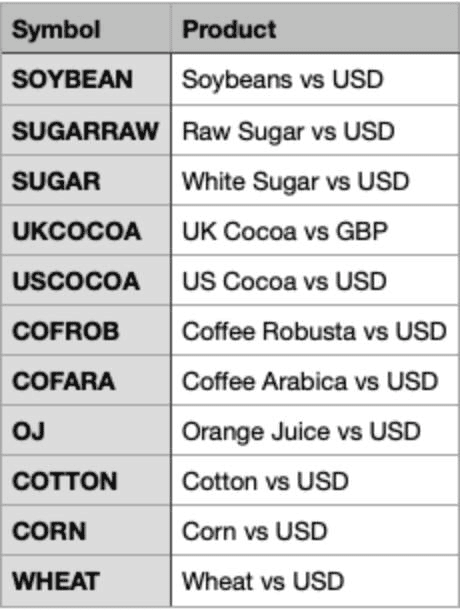Introducing Soft Commodities
Fusion Markets

We are excited to launch Soft commodities on our MT4/MT5 platform now to help you succeed in the markets.
Commodities that are grown rather than extracted or mined are called soft commodities. Soft commodities are among the oldest futures classes known to have been traded actively. Products in this category include soybeans, cocoa, coffee, cotton, sugar, rice, wheat, and all types of livestock.
Our platform now offers the following products

Happy Trading!
We’ll never share your email with third-parties. Opt-out anytime.